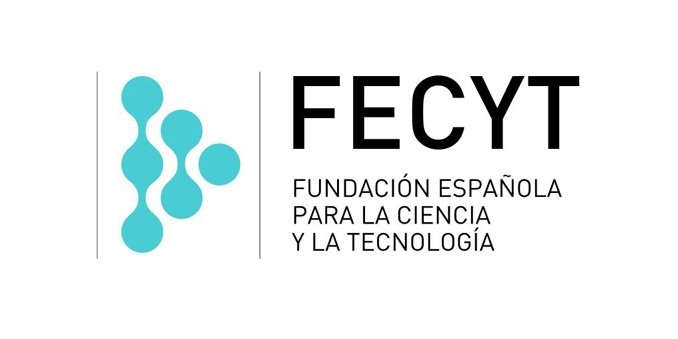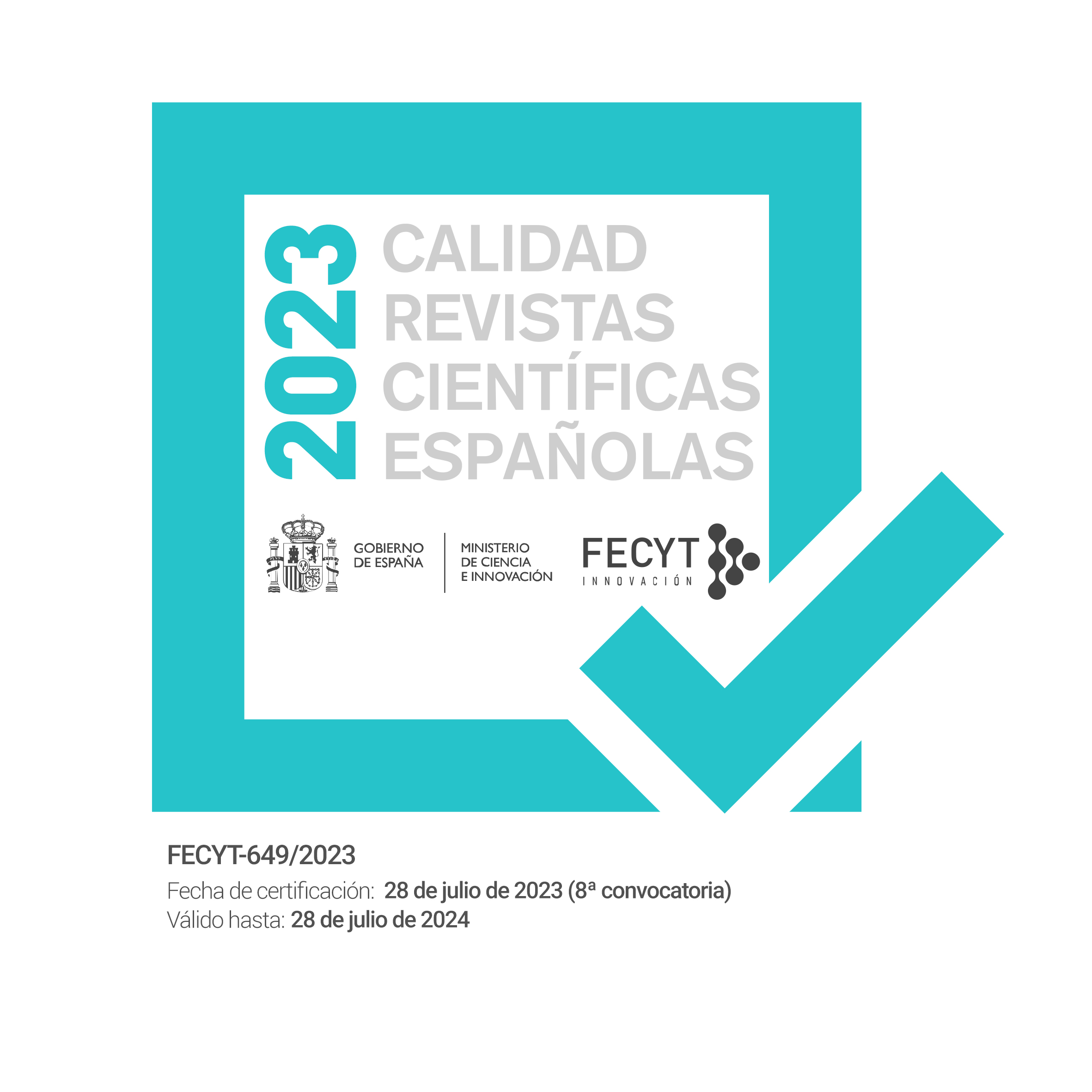El vídeo en las Campañas de Crowfunding de Economía Social en España
Factores que Favorecen el Éxito
Palabras clave:
vídeo, economía social, economía colaborativa, marketing experiencial, red elástica, regresión logística, comunicaciónResumen
La utilización del vídeo en la campaña de crowdfunding se considera prácticamente una condición sine qua non para poder tener posibilidades de éxito en la campaña. Nuestro trabajo versa sobre las características que debe de tener ese vídeo en las campañas de economía social determinando qué factores dentro del vídeo son fundamentales para la obtención del éxito; para ello estudiamos campañas de crowdfunding españolas de donación y de recompensa. Comenzamos por un amplio número de variables y las acotamos a las que se consideran más adecuadas, para ello realizamos una selección mediante red elástica y posteriormente un modelo logístico multivariante que nos indicará cuáles son los factores que más apoyan el éxito de las campañas de economía social. Los resultados obtenidos muestran que hay cierta diferenciación de los factores importantes para el caso de las campañas de economía social con respecto a los factores fundamentales de las campañas que abarcan todos los casos. Los factores que se muestran como fundamentales son que en el vídeo se muestre una actitud entusiasta, el uso del nivel tropológico en los códigos visuales, que se grabe con trípode, que se empleen códigos gestuales y el uso de figuras de contradicción en el lenguaje, mientras que la interrogación retórica aparece como factor negativo y a evitar.
Descargas
Referencias
Aaker, D. A. & Stayman, D. M. (1992) Implementing the Concept of Transformational Advertising, Psychology & Marketing, 9 (3), 237–253. https://doi.org/10.1002/mar.4220090306
Agrawal, S. (2014). Neuromarketing in Action: How to Talk and Sell to the Brain, Journal of Consumer Marketing, 31(5), 404–405. https://doi.org/10.1108/JCM-02-2014-0879.
Alpert, M. I., Alpert, J. I. & Maltzc, E. N. (2005). Purchase occasion influence on the role of music in advertising, Journal of Business Research, 58, 369–376.
Barnett, C. (2014). Better Than A Google Search: Crowdfunding Q&A with Kay Koplovitz and Chance Barnett, vídeo, duración 51:45. https://youtu.be/22DkpQc4o5s, consultado 12 de julio de 2020.
Beier, M. & Wagner, K. (2015). Crowdfunding Success: A Perspective from Social Media and E-Commerce, Thirty Sixth International Conference on Information Systems, Fort Worth, Texas.
Belleflamme, P., Lambert, T. & Schwienbacher, A. (2013). Individual Crowdfunding Practices, Venture Capital, 15 (4), pp. 313–333. https://doi.org/10.1080/13691066.2013.785151.
Berger, I. E. & Mitchell, A. A. (1989). The Effect of Advertising on Attitude Accessibility, Attitude Confidence, and the Attitude-Behavior Relationship, Journal of Consumer Research, 16 (3), 269–279. https://doi.org/10.1086/209213
Beyene, J., Atenafu, E.G., Hamid, J.S., To, T., & Sung, L. (2009). Determining relative importance of variables in developing and validating predictive models. BMC Medical Research Methodology, 9 (1), 64–73. https://doi.org/10.1186/1471-2288-9-64
Breiman, L., Friedman, J., Olshen, R. & Stone, C. (1984). Classification and Regression Trees, Wadsworth, New York.
Bruno Pérez, N. A. (2020); El Vídeo en el Crowdfunding de Donación y Recompensa. Un Ejemplo de Economía Colaborativa, Cátedra Cajasiete de Economía social y Cooperativa, La Laguna, Islas Canarias.
Bruno Pérez, N. A. & Morini Marrero (2020). Análisis del Vídeo de las Campañas de Crowdfunding Utilizando Regresión Logística, Encuentro Internacional de Investigadores en Administración 2020, Bogotá, 9 y 10 de diciembre.
Bueno García, A. (2000). Publicidad y Traducción, Monográficos de la Revista Hermeneus, nº 2, Excma. Diputación Provincial de Soria, Soria.
Caivano, J. L. & López, M. A. (2007). Chromatic Identity in Global and Local Markets: Analysis of Colours in Branding, Journal of the International Colour Association, 1(3), 1–14.
Callister, M. A., Lesa A. & Stem, L. A. (2007). The Role of Visual Hyperbole in Advertising Effectiveness, Journal of Current Issues and Research in Advertising, 29 (2), 1–14. https://doi.org/10.1080/10641734.2007.10505212
Clair, N. S. (2014). How To Make A Crowdfunding Video That Works, Forbes, 27 de noviembre de 2014. https://www.forbes.com/sites/neilstclair/2014/11/27/how-to-make-a-crowdfunding-video-that-works/#105b33621800. Consultado el 11 de julio 2020.
Colistra, R. & Duvall, K. (2017). Show Me the Money: Importance of Crowdfunding Factors on Backers’ Decisions to Financially Support Kickstarter Campaigns, Social Media + Society, octubre-diciembre, 1–17. https://doi.org/10.1177/2056305117736942
Cordova, A. Dolci, J. y Gianfrate, G. (2015). The Determinants of Crowdfunding Success: Evidence from Technology Projects, Procedia-Social and Behavioral Sciences, 181 (11), 115–124. https://doi.org/10.1016/j.sbspro.2015.04.872.
Cumming, D. J., Leboeuf, G. & Schwienbacher, A. (2014). Crowdfunding Models: Keep-it-All vs. All-or-Nothing, Working Paper, SKEMA Business School, Lille, Francia. https://doi.org/10.2139/ssrn.2447567
De Bono E. (1989). El Pensamiento Lateral; Manual de Creatividad, Paidos Plural, Barcelona.
De Montigny, B. (2017). Testimonial Marketing: Pros and Cons, working paper, AAD 617, University of Oregon.
Del Moral Pérez, M. E. (2000). Los Nuevos Modelos de Mujer y de Hombre a través de la Publicidad, Comunicar, 14, 208–217. https://doi.org/10.3916/C14-2000-27
Eco, U. (1977). Tratado de Semiótica General, Editorial Lumen, Barcelona.
Eco, U. (1986). La Estructura Ausente; Introducción a la Semiótica, Editorial Lumen, Barcelona.
Elliot, A. J., Markus, A. Maier, M. A., Moller, A. C. & Friedman. R. (2007). Color and Psychological Functioning: The Effect of Red on Performance Attainment, Journal of Experimental Psychology: General, 136 (1), 154 –168. https://doi.org/10.1037/0096-3445.136.1.154.
Everaert-Desnedt, N. (1984). La Communication Publicitaire: Étude Semiopragmatique, Cabay, Louvain-La-Neuve.
Farinango, C. L. E. (2017). Publicidad Cuerpo y Deporte, Editorial Jurídica del Ecuador, Quito.
Fondevila Gascón, J. F., Rom Rodríguez, J. & Mata Monforte, J. (2015). Crowdfunding as a Formula for the Financing of Projects: an Empirical Analysis, Revista Científica Hermes, 14, 24–47. https://doi.org/10.21710/rch.v14i0.230
Galmés Cerezo, M. (2015). Comunicación y marketing experiencial: aproximación al estado de la cuestión, Opción, 31 (1), 974–999.
García Vilas, S. (2015). La Publicidad Subtitulada, Marketing News, 14-abril, https://www.marketingnews.es/marcas/opinion/1089693054305/publicidad-subtitulada.1.html. Consultado el 5 de diciembre de 2020.
Garrido Lora, M. (2007). Estereotipos de género en la publicidad Creatividad y Publicidad, Creatividad y Sociedad, 11, 53–71.
Gorn, G. J. (1982). The Effects of Music In Advertising On Choice Behavior: A Classical Conditioning Approach, Journal of Marketing, 46, 94–101. https://doi.org/10.1177/002224298204600109
Gutiérrez Ordóñez, S. (1997). Comentario pragmático de textos publicitarios, Arco Libros, Madrid.
Guyon, I. & Elisseeff, A. (2003). An Introduction to Variable and Feature Selection, Journal of Machine Learning Research, 3, 1157–1182.
Hastie, T., Tibshirani, R. & Friedman, J. (2009). The Elements of Stistical Learning: Data Mining, Inference and a Prediction, Springer, New York. 2ª Edición.
Hernando Cuadrado, L. A. (1994). Semiótica y modernidad, Semiótica y modernidad, en José M. Paz Gago, José Ángel Fernández Roca, Carlos J. Gómez Blanco (eds.), Actas del V Congreso internacional de la Asociación Española de Semiótica, A Coruña, 1992, Coruña: Universidade. Servizo de publicacións, vol. II, 513–523.
Herreros Arconada, M. (1994). Comunicación y Marketing, Questiones publicitarias, 1(2), 9–21. https://doi.org/10.5565/rev/qp.199
Hoeken, J. (1995). The design of persuasive texts: effects of content, structure and style on attitude formation, Katholieke Universiteit Brabant, Tilburg.
Holbrook, M. B. & Hirschman, E. C. (1982). The experiential aspects of consumption: Consumer fantasies, feelings, and fun, Journal of Consumer Research, 9, 132–140. https://doi.org/10.1086/208906
Iruzubieta, G, Ayala, Ó., Gil, V, Martín, G. & Rosero, S. (2011). Video marketing y publicidad en video online: aproximación desde la perspectiva del usuario, iab Interactive Advertising Bureau, https://iabspain.es/wp-content/uploads/Informe_video_IAB_15_septiembre_2011.pdf. Consultado el 15 de julio de 2020.
Jenkins, H., & Deuze, M. (2008). Convergence culture, The International Journal of Research Into New Media Technologies, 14 (1), 5–12. https://doi.org/10.1177/1354856507084415.
Jiang, Z. & Benbasat, I. (2007). The Effects of Presentation Formats and Task Complexity on Online Consumers' Product Understanding. MIS Quarterly, 31 (3), 475–500. https://doi.org/10.2307/25148804
Kahneman, D. & Tversky, A., (1979). Prospect Theory: An Analysis of Decision under Risk, Econometrica, 47, (2), marzo, 263–291. https://doi.org/10.2307/1914185
Kahneman, D. & Tversky, A. (1982). The Psychology of Preferences, Scientific American, 246, 160–73. https://doi.org/10.1038/scientificamerican0182-160
Kalhe, L. R. & Homer, P. M. (1985). Physical Attractiveness of the Celebrity Endorser: A Social Adaptation Perspective, Journal of Consumer Research, 11 (4):954–961. https://doi.org/10.1086/209029
Kelly, K., Laskin, A. & Rosenstein, G. (2010). Investor relations: Two-way symmetrical practice, Journal of Public Relations Research, 22, 182–208. https://doi.org/10.1080/10627261003601630.
Koch, J. A. & Siering, M. (2015). Crowdfunding Success Factors: The Characteristics of Successfully Funded Projects on Crowdfunding Platforms, Proceedings of the 23rd European Conference on Information Systems (ECIS 2015); abril, Muenster, Alemania.
Kursa, M. B. & Rudnicki, W. R. (2010). Feature Selection wih the Boruta Package, Journal of Statistical Software, 36 (11), 1–13. https://doi.org/10.18637/jss.v036.i11
Le Breton, D. (1994). Lo imaginario del cuerpo en la tecnociencia, Reis: Revista española de investigaciones sociológicas, 68, 197–210. https://doi.org/10.2307/40183763
Leibenstein, H. (1950). Bandwagon, Snob, and Veblen Effects in the Theory of Consumers' Demand, The Quarterly Journal of Economics, 64 (2), mayo, 183–207. https://doi.org/10.2307/1882692
Leigh, J. (1994). The use of figures of rhetoric in print ad headlines, Journal of Advertising, 23 (2), 17–34. https://doi.org/10.1080/00913367.1994.10673439
Lichtenstein, S. & Slovic, P. (1971). Reversals of Preference between Bids and Choices in Gambling Decisions. Journal of Experimental Psychology, 89(1), 46–55. https://doi.org/10.1037/h0031207
Liu, Y., Bhattcharya, P. & Jiang Z. (2014). Video-Evoked Perspective Taking on Crowdfunding Plataforms: Impacts on Contribution Behavior, Thirty Fifth International Conference on Information Systems, Auckland.
Manca, L. & Manca, A. (2012). The Portrayal of Utopian Space in Magazine Advertisements, en Manca, L., Manca, A. & Pieper, G. W. (eds), Utopian Images and Narratives in Advertising: Dreams for Sale, 7–29. Lexingtom Books, Lanham, Maryland.
Manca, L., Manca, A. & Pieper, G. W. (2012). Introduction Probing Madison Avenue’s, en Manca, L., Manca, A. & Pieper, G. W. (eds), Utopian Images and Narratives, 1–6, Lexingtom Books, Lanham, Maryland.
Marshall, J. (2010). Why Are Animals Colourful? Sex and Violence, Seeing and Signals. Journal of the International Colour Association, 5(8), 1–8.
Martín Núñez, M. (2014). El Pitching 2.0: Conceptualización y Cesarrollo en Proyectos de Crowdfunding, Historia y Comunicación Social, 19, 821–832. https://doi.org/10.5209/rev_HICS.2014.v19.45005
Mata Monforte, J. (2014). Las Campañas de Crowdfunding, su Eficacia en Proyectos Lucrativos y Causas Sociales, Facultat de Cuminació i Relacions Internacionals Blanquema, Universitat Ramon Llull, Tesis Doctoral, julio, Barcelona.
McQuarrie, E. F. & David G. M. (1992). On Resonance: A Critical Pluralistic Inquiry into Advertising Rhetoric, Journal of Consumer Research, 19, 180–197 https://doi.org/10.1086/209295
McQuarrie, E. F. & Mick, D. G. (1996). Figures of Rhetoric in Advertising Language, Journal of Consumer Research, 22 (4), 424–437. https://doi.org/10.1086/209459
McQuarrie, E. F. & Mick, D. G. (1999). Visual Rhetoric in Advertising Language, Journal of Consumer Research, 26 (2), 37–54. https://doi.org/10.1086/209549
Millar, A. (2002). Subset Selection in Regression, Chapman & Hall/CRC Monographs on Statistics & Applied Probability, New York, 2ª edición.
Minah, G. (2008). Colour as Idea: The Conceptual Basis for Using Colour in Architecture and Urban Design. Journal of the International Colour Association, 2(3), 1–9.
Misra, S. & Beatty S. (1990). Celebrity spokesperson and brand congruence, Journal of Business Research, 21, 159–73. https://doi.org/10.1016/0148-2963(90)90050-N
Mollick, E. (2014), The dynamics of crowdfunding: An exploratory study, Journal of Business Venturing, 29, 1–16. https://doi.org/10.1016/j.jbusvent.2013.06.005
Mollick, E. R. and Kuppuswamy, V. (2014). After the Campaign: Outcomes of Crowdfunding (January 9, 2014). UNC Kenan-Flagler Research Paper No. 2376997. https://doi.org/10.2139/ssrn.2376997.
Moral Moral, M. & Fernández Alles, M. T. (2012). Nuevas Tendencias del Marketing: El Marketing Experiencial, Entelequia, Revista Interdisciplinar, 4, 237–251.
Mord, M. S. & Gilson, E. (1985). Shorter Units: Risk-Responsibility-Reward, Journal of Advertising Research, 25 (4), 9–19.
Mott, E. (2012). 7 Video Tips for Crowdfunding Campaign Magnetism and Results, Serch Engine watch, https://searchenginewatch.com/sew/opinion/2220405/7-video-tips-for-crowdfunding-campaign-magnetism-and-results. Consultado el 19 mayo 2020.
Ogilvy, D. (1985). Ogilvy on Advertising, First Vintage Books, New York.
Olsen, G. D. (1995). The influence of Silence and Background Music on Recall and Atribute Importance, Journal of Advertising, 24 (4), 29–44. https://doi.org/10.1080/00913367.1995.10673487
Park, C. W. & Young S. M. (1986). Consumer Response to Television Commercials: The Impact of Involvement and Background Music on Brand Attitude Formation, Journal of Marketing Research, 23, 11–24. https://doi.org/10.1177/002224378602300102
Patzer, G. L. (1991). Multiple Dimensions of Performance for 30-Second and 19-Second Commercials, Journal of Advertising Research, 31, 18–25.
Petty, R., Cacioppo, J. & Schumann D. (1983). Central and peripheral routes to advertising effectiveness: the moderating role of involvement, Journal of Consumer Research, 10, 135–46. https://doi.org/10.1086/208954
Pike, S. & Ryan, C. (2004). Destination Positioning Analysis through a Comparison of Cognitive, Affective, and Conative Perceptions, Journal of Travel Research, 42, 333–342. https://doi.org/10.1177/0047287504263029
Pine, J. & Gilmore, J. (1998). Welcome to the Experience Economy, Harvard Business Review, Julio-Agosto, 98- 105.
Renvoise, P. & Morin, C. (2007). Neuromarketing: Understanding the Buy Buttons in Your Customer’s Brain, Thomas Nelson, Nashville.
Rodríguez del Pino, D., Miranda Villalón, J. A., Olmos Hurtado, A. & Ordozgiti de la Rica, R. (2014). Publicidad on line; Las Claves del Éxito en Internet, ESIC Marketing, Madrid.
Russell, J.A. (1980). A Circumplex Model of Affect, Journal of Personality and Social Psychology, 39 (6), 1161–1178. https://doi.org/10.1037/h0077714
Sánchez Corral, L. (2006). Leer el Cuerpo (Publicitario) Como Sujeto que Enuncia, Revista OCNOS, nº 2, 2006, p. 23–37. https://doi.org/10.18239/ocnos_2006.02.02
Schmitt, B. H. (2000). Experiential Marketing, http://www.ucipfg.com/Repositorio/MGTS/MGTS14/MGTSV9/materialesnuevos/semana4/MercadeoVivencial-ExperientialMarketing.pdf. Consultado 25 de junio 2020.
Schmitt, B. H. (2006). Experiential Marketing, DEUSTO, Barcelona.
Steinberg, S. M. & DeMaria, R., (2012). The Crowdfunding Bible: How to Raise Money for Any Startup, Video Game or Proyect, Kimmmich, J. (ed), read.me, http://www.crowdfundingguides.com/The%20Crowdfunding%20Bible.pdf. Consultado 30 de abril de 2019.
Stout, P. A. & Leckenby, J. D., (1988). The Nature of Emotional Response to Advertising: A Further Examination, Journal of Advertising, 17 (4), 53–57. https://doi.org/10.1080/00913367.1988.10673130.
Takahashi, S., (2012). Effect of Red vs Black Clothing on the Impression of Persons Engaged in a Dialogue, Journal of the International Colour Association, 7, 4–12.
Thorndike, E. L. (1920). Intelligence Examinations for College Entrance, Journal of Educational Research, 1 (5), 329–337. https://doi.org/10.1080/00220671.1920.10879060
Tversky, A. & Kahneman, D. (1973). Availability: A Heuristic for Judging Frequency and Probability, Cognitive Psychology, 5, 207–232. https://doi.org/10.1016/0010-0285(73)90033-9
Walls, A.R., Okumus, F; Wang, Y.R. & Wuk. D.J. (2011). An epistemological view of consumer experiences. International Journal of Hospitality Management, 30; 10–21. https://doi.org/10.1016/j.ijhm.2010.03.008
Weisberg, S. (2005). Applied Linear Regression, Wiley, New Jersey, 3ª Edición. https://doi.org/10.1002/0471704091
Wheat, R. E., Wang, Y., Byrnes, J. E. & Ranganathan J. (2013). Raising money for scientific research through crowdfunding, Trends in Ecology & Evolution, 28 (2), 71–72. https://doi.org/10.1016/j.tree.2012.11.001
Wittmann, B. C., Daw, N. D., Seymour, B. & Dolan, R. J. (2008). Striatal Sctivity Underlies Novelty-based Choice in Humans, Neuron, 58 (6), 967–973. https://doi.org/10.1016/j.neuron.2008.04.027
Zou, H. y Hastie, T. (2005). Regularization and variable selection via the elastic net, Journal of the Royal Statistical Society Series B, 67(2), pp. 301–320. https://doi.org/10.1111/j.1467-9868.2005.00503.x
Publicado
Número
Sección
Licencia
Derechos de autor 2021 Universidad de Jaén

Esta obra está bajo una licencia internacional Creative Commons Atribución 4.0.
- Los autores/as conservarán sus derechos de autor y garantizarán a la revista el derecho de primera publicación de su obra, el cuál estará simultáneamente sujeto a la Licencia de reconocimiento de Creative Commons que permite a terceros compartir la obra siempre que se indique su autor y su primera publicación esta revista.
- Los autores/as podrán adoptar otros acuerdos de licencia no exclusiva de distribución de la versión de la obra publicada (p. ej.: depositarla en un archivo telemático institucional o publicarla en un volumen monográfico) siempre que se indique la publicación inicial en esta revista.
- Se permite y recomienda a los autores/as difundir su obra a través de Internet (p. ej.: en archivos telemáticos institucionales o en su página web) antes y durante el proceso de envío, lo cual puede producir intercambios interesantes y aumentar las citas de la obra publicada. (Véase El efecto del acceso abierto).
La Revista de Estudios Empresariales. Segunda Época, utiliza PKP Preservation Network (PN).




























